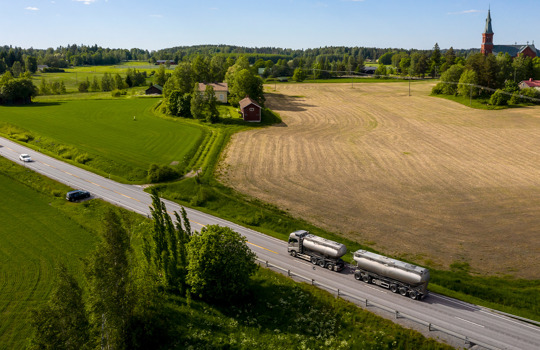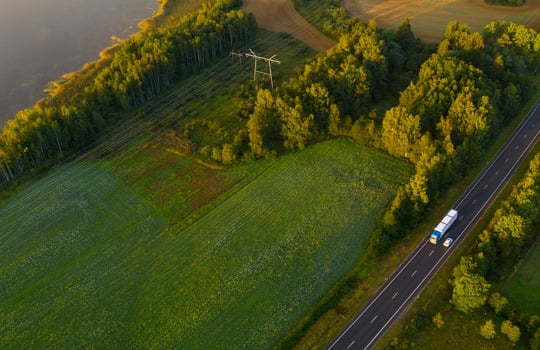Biogas is plentiful and its production capacity is yet to reach its full potential
The European Commission’s objective is to increase biomethane’s annual production capacity in Europe to almost 350TWh by 2030. The goal is ambitious but possible. There’s a lot of untapped biogas potential as there’s a lot of biodegradable waste that isn’t yet properly utilised in all European countries. In the future, renewable gases such as synthetic methane can also be produced with power-to-gas (P2G) technology.
Demand for biogas as a fuel is at an all-time high. As more people want to reduce emissions from road transport and logistics, they turn to liquefied biogas (LBG), which is the cleanest available fuel for heavy-duty vehicles. Also, the methane used in gas-fuelled passenger vehicles and vans is nowadays mainly biogas.
Demand and supply of biogas will continue to increase in the near future. The European Commission’s objective is to increase biomethane production to almost 350 TWh by 2030. The goal was set in the REPower EU Plan, which aims to make Europe independent of Russia’s fossil energy sources.
“Biogas production in Europe needs to grow tenfold in eight years. This is ambitious but possible. There’s a lot of untapped potential in biogas production in Europe. It has been estimated that in Finland, for example, the biogas production potential is 10 TWh a year, whereas the current capacity is just a little over one TWh,” says Juha Ala-Huikku, Head of Public Affairs at Gasum.
Gasum has set a goal to make 7 TWh of renewable gas available to the market by 2027 through its own production and that of its certified European partners.
Biogas from manure can mean negative emissions
Biogas is produced from biodegradable waste such as biowaste from households and companies, side streams from the food industry, wastewater sludge, and manure and field biomass from agriculture. The good thing with such waste is that we won’t run out of it. Increasing the production of biogas only means utilising the available feedstock to its fullest.
One of the greatest untapped feedstock potentials lies in manure and agricultural side streams. The EU is currently trying to outline ways to ensure that manure and other such agricultural side streams could be steered to biogas production more easily. This could be done by following the Swedish example of subsidising the use of manure as a feedstock in biogas production.
“Producing more biogas to replace the use of fossil fuels is a low hanging fruit. The technology to produce biogas is already there. There is no need for new innovations, just for new plants and to ensure that the feedstock is directed to those plants,” states Ala-Huikku.
Biogas reduces fuel’s emissions during its life cycle up to 90%. When biogas is produced from manure, the greenhouse gas emissions generated by the traditional manure treatment are avoided, and thus the total life cycle emission reductions of biogas can even exceed 100%. When the manure isn’t spread on fields, where it would release methane straight into the atmosphere, but instead decomposes in a biogas plant, the methane can be processed into biogas.
The process perfectly demonstrates the advantages of a circular economy.
The biogas infrastructure can be used in future solutions
In the future, renewable gases such as synthetic methane will be produced using power-to-gas (P2G) technology. The carbon-free synthetic methane can be used with the same infrastructure that biogas and natural gas currently use.
Although opinions differ on the time frame for implementing the aforementioned large-scale solutions, Ala-Huikku believes that the future may be closer than we think.
“At the moment, the energy industry is at a fundamental turning point that will probably speed up the development of new energy sources and technologies. It’s really interesting to see what kind of possibilities this will offer. But I’m sure that both the demand and supply of biogas will multiply in the coming years, and Gasum will of course do its part to increase the capacity,” says Ala-Huikku.



